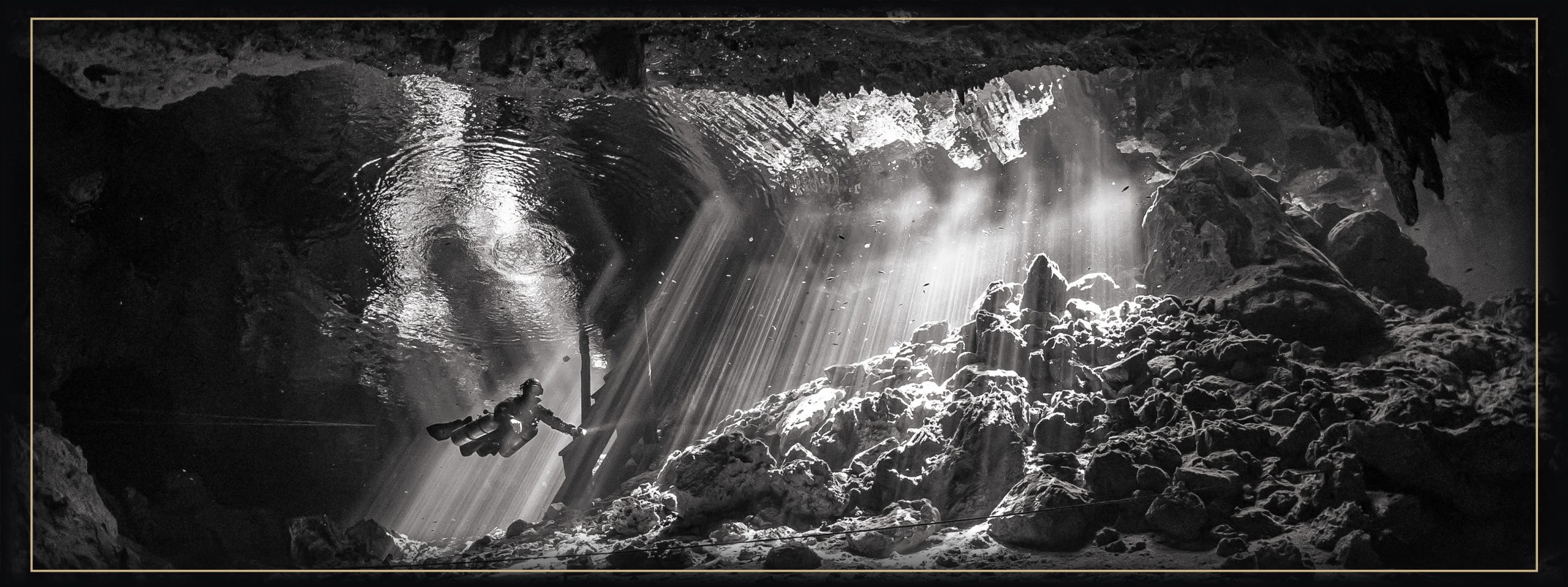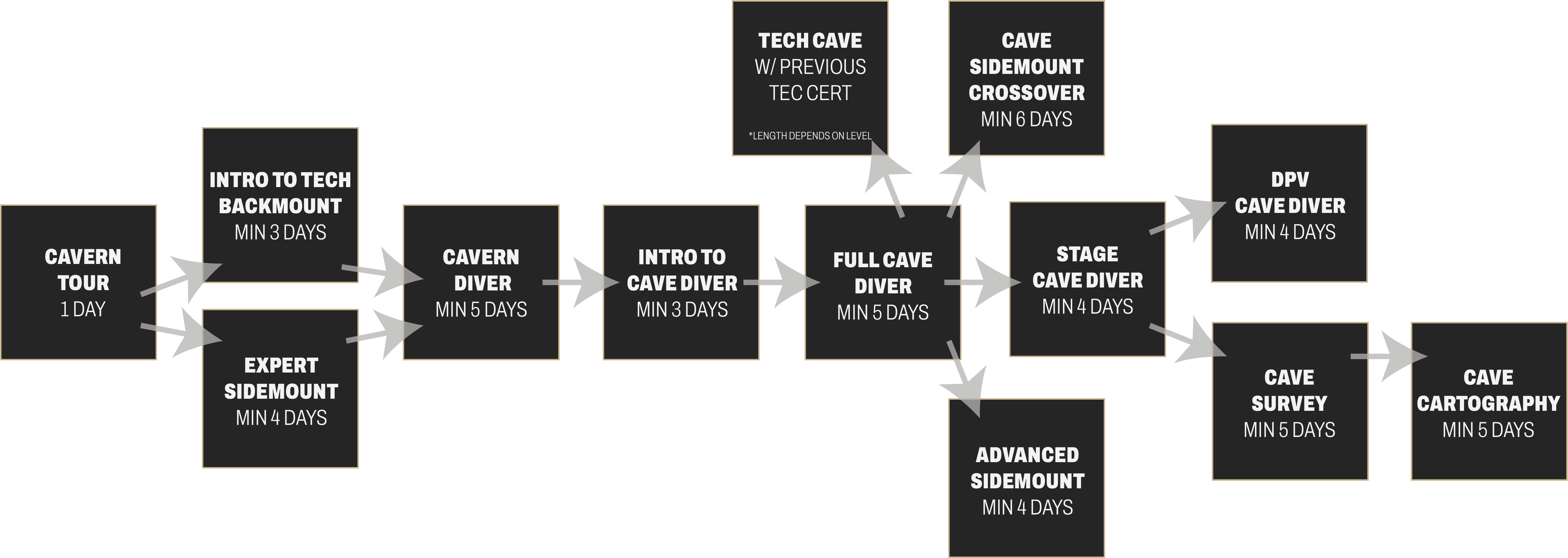
info@underthejungle.com
CAVERN COURSE AT A GLANCE
• Course Duration: 5 Days Average
• Certification Fees
• 32% Nitrox Fills Included
• Entrance fees included
• Equipment: backmounted or sidemounted doubles
PREREQUISITES
• Age: 18 Years Old
• 15-17 Year Olds Allowed With Parental Consent
• Number of Dives: 50 Logged Dives
• Cert: Intro to Tec or Sidemount Expert
• Combinable with Intro to Cave and Full Cave.
WHAT CAN I DO WITH THIS CERT?
• Natural Daylight Must Be Visible at All Times
• Max 200 ft/60 m Penetration From the Surface
• Maximum Depth Is Limited to 130 ft/40 m
• A Single, Continuous Guideline Is Used
• Decompression Is Prohibited on Cavern Dives
• No Restrictions or Tight Spaces
• Penetration Is Limited to 1/6 of Double Tanks
CAVE TRAINING PATH

CAVERN COURSE DETAILS
The caverns are a unique environment. Halfway between the dark, winding tunnels of the cave and the daylight jungle above, cavern diving allows divers to explore the overhead environment while making simple dives into large, open spaces. For those who have heard the siren call of the cave, the cavern course is the first and most difficult step in TDI’s overhead environment training program as all of the information presented to the student is new. We demand a lot of our cavern students, probably more than many instructors, but it’s only because we have a desire to see you succeed in subsequent courses. If you master the basic techniques from the start, the rest of your cave training will be easy in comparison, and you will be a much better diver for it. Successfully passing the course will require buoyancy, trim and precision control unlike any other certification you have completed. Expect long days, hard work, and the most fulfilling dive course of your career.
WHERE WILL I DIVE DURING THE CAVERN COURSE?
The TDI Cavern Course will take you to caverns such as Chikin Ha, Chac Mool, Kukulkan, Ponderosa and Carwash. Dives during the course are skill-intensive, so while all of these caverns are beautiful, you probably won’t have much time to relax and enjoy them during the course. We highly recommend scheduling a few days after your cavern course for either independent cavern diving or guided cavern dives in sites such as Dos Ojos, Tajma Ha, and Dreamgate, as the high-impact training conducted during the course is prohibited in these caverns and we typically avoid them during cavern training. Theory sessions are conducted in the classroom at Under the Jungle, and confined water skill sessions are completed in the head pools of the caverns.
WHAT WILL I LEARN DURING THE CAVERN COURSE?
The TDI Cavern Course includes dive theory, confined water skills practice, cavern dives, and practice scenarios.
⇒ CAVERN COURSE THEORY
• Dangers and risks of diving into the overhead environment
• The rules and history of accident analysis, and how it makes cave diving safer
• Gas calculations following the rule of sixths
• Active and passive communication for the overhead environment, including positioning, light management, and hand signals
• Basics of cavern geology and formation and the need for conservation
• Cavern diving etiquette and dive site access considerations
• Problem solving procedures and protocols
• Diving planning, including the use of cavern maps
⇒ CAVERN COURSE LAND DRILLS
• How to properly follow and reference a guideline
• Primary line deployment and retrieval as a team, familiarization with safety spool deployment and use
• How to follow a guideline in zero visibility, alone, as a team, and in air sharing scenarios
⇒ CONFINED WATER SKILLS SESSIONS
• Guideline deployment and retrieval
• Zero visibility line following practice circuit
• Fundamental skills review as needed
⇒ CAVERN DIVES AND SKILLS
• Predive checks
• Air sharing practice before every dive
• Primary reel placement and retrieval
• Line following and referencing including team positioning and placement in the cavern
• Simulated gear failures including mask and light failures, as well as other configuration-dependent failures such as valve shut downs if doubles are used.
• Loss of gas and air sharing simulation while exiting the cavern
• Zero visibility exit simulation
• Zero visibility air sharing exit simulation
• Neutrally buoyant, no-contact, properly positioned safety stops


